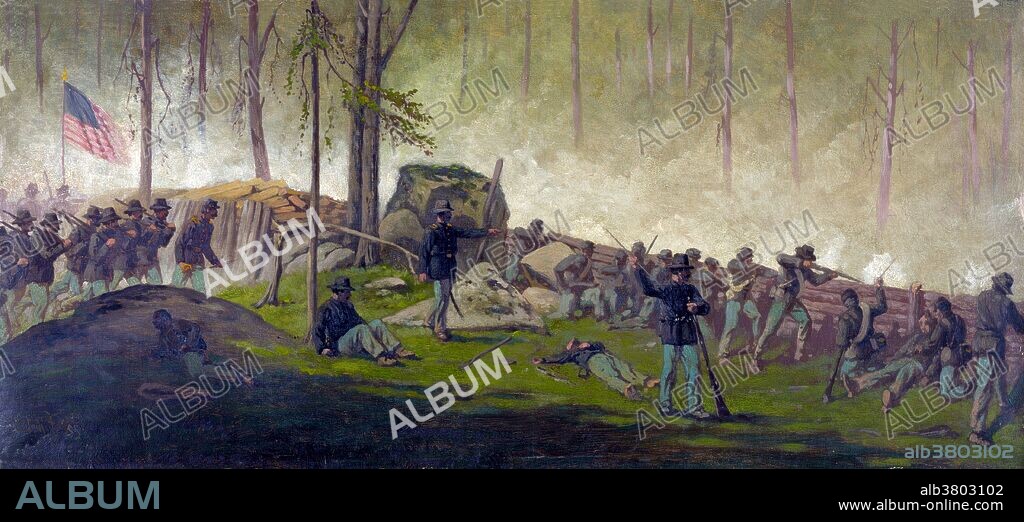alb3803102
Battle of Gettysburg, Culp's Hill, 1863

|
Ajouter à une autre Lightbox |
|
Ajouter à une autre Lightbox |



Avez-vous déjà un compte? S'identifier
Vous n'avez pas de compte ? S'inscrire
Acheter cette image

Titre:
Battle of Gettysburg, Culp's Hill, 1863
Légende:
Voir la traduction automatique
Entitled: "Scene behind the breastworks on Culps Hill, morning of July 3rd 1862." The Battle of Gettysburg was fought July 1-3, 1863, in and around the town of Gettysburg, Pennsylvania. The battle with the largest number of casualties in the American Civil War, it is often described as the war's turning point. Union Major General George Gordon Meade's Army of the Potomac defeated attacks by Confederate General Robert E. Lee's Army of Northern Virginia, ending Lee's invasion of the North. Culp's Hill was a critical part of the Union Army defensive line, the principal feature of the right flank, or barbed portion of what is described as the fish-hook line. Holding the hill was by itself unimportant because its heavily wooded sides made it unsuitable for artillery placement, but its loss would have been catastrophic to the Union army. It dominated Cemetery Hill and the Baltimore Pike, the latter being critical for keeping the Union army supplied and for blocking any Confederate advance on Baltimore or Washington, D.C. Between 46,000 and 51,000 soldiers from both armies were casualties in the three-day battle. Oil painting by Edwin Forbes, circa 1865-95.
Crédit:
Album / Science Source / LOC
Autorisations:
Modèle: Non - Propriété: Non
Questions sur les droits?
Questions sur les droits?
Taille de l'image:
4800 x 2198 px | 30.2 MB
Taille d'impression:
40.6 x 18.6 cm | 16.0 x 7.3 in (300 dpi)
 Pinterest
Pinterest Twitter
Twitter Facebook
Facebook Copier le lien
Copier le lien Email
Email
